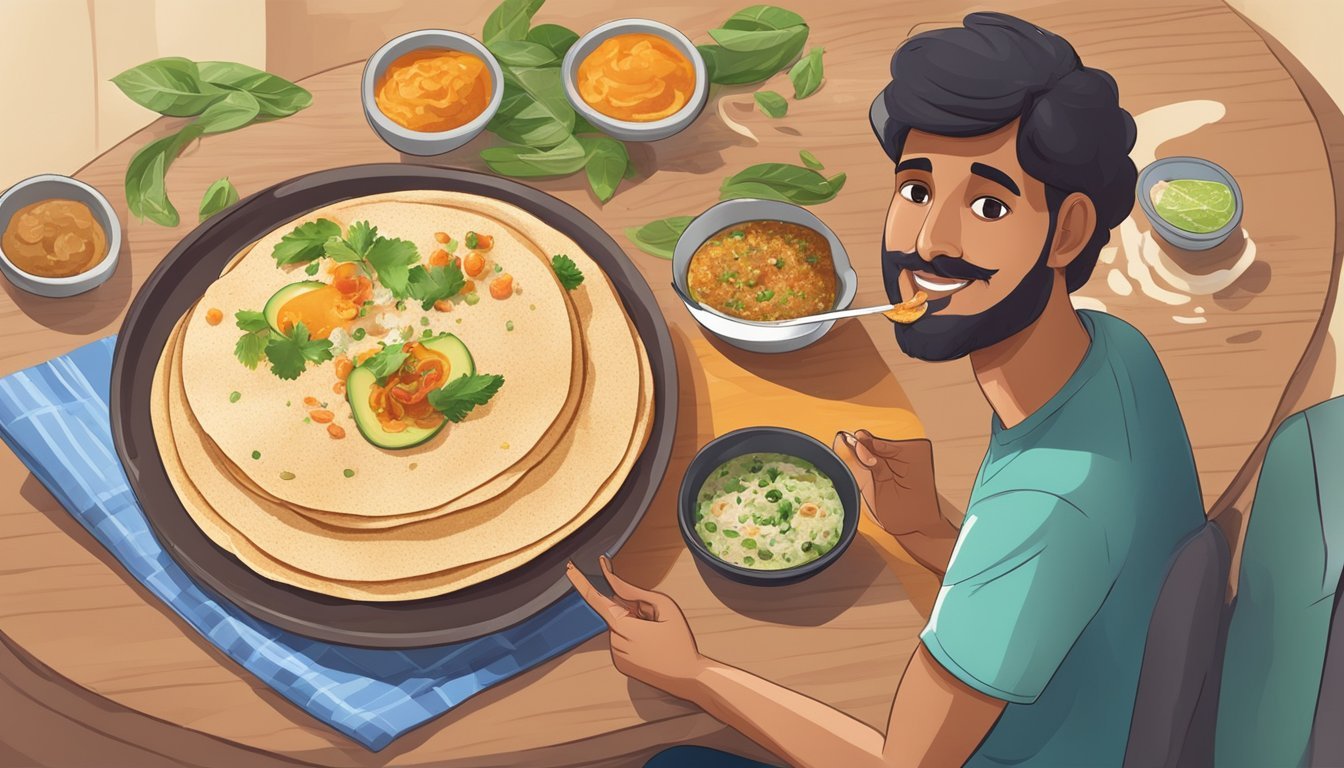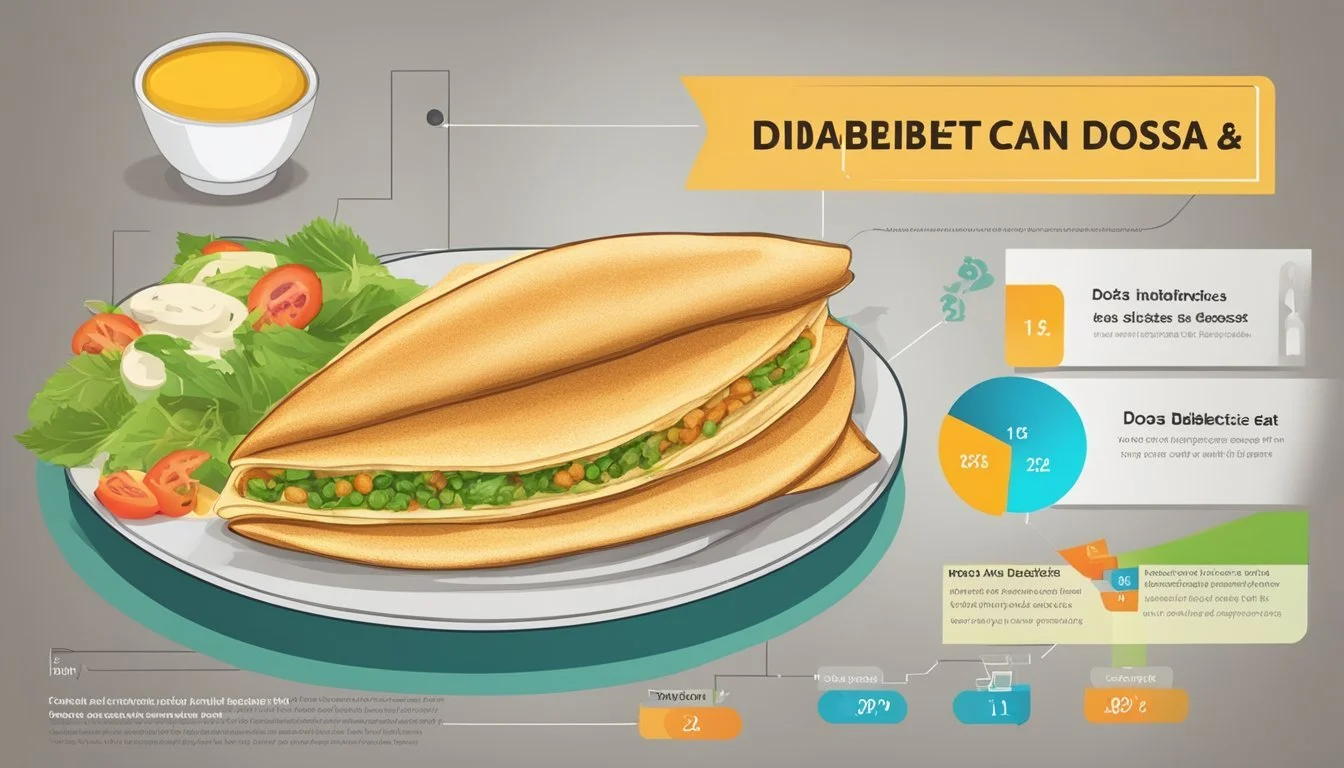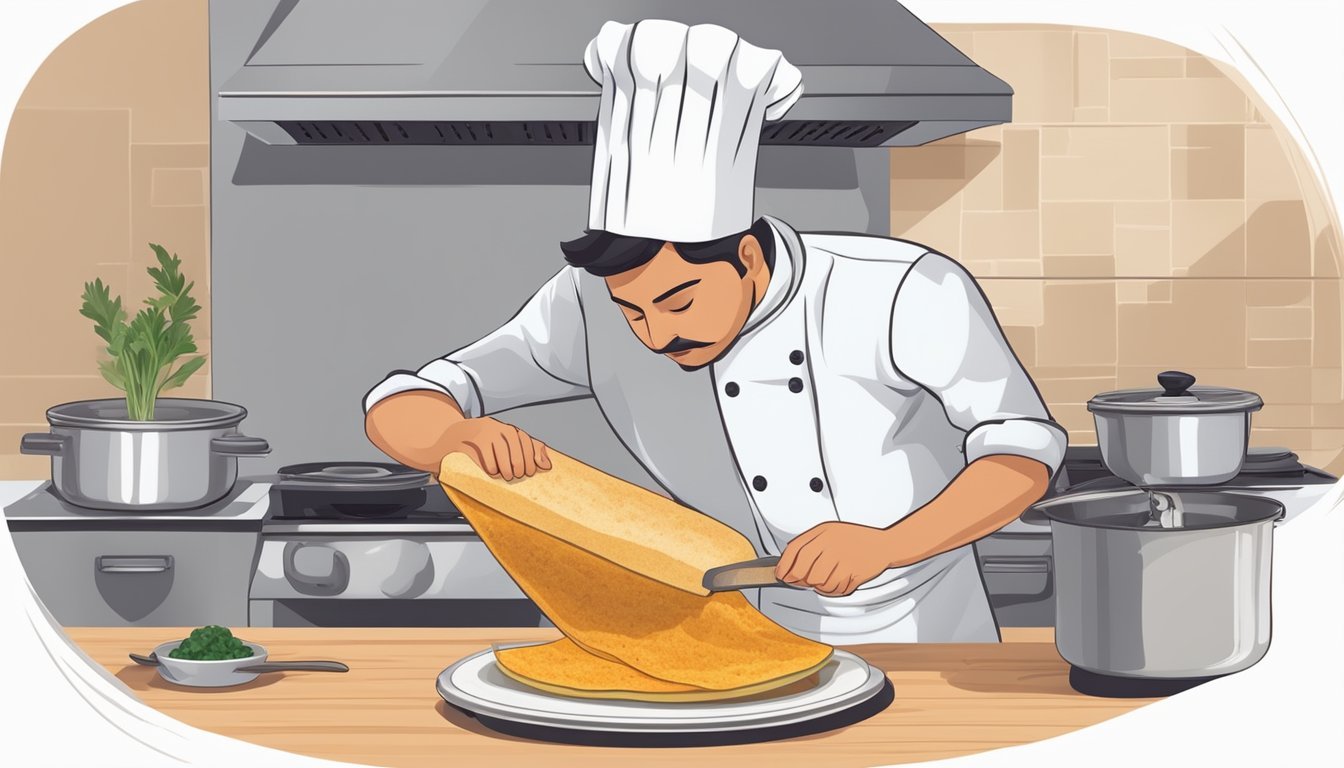Can Diabetics Eat Dosa?
Tips for Healthier Enjoyment
Dosa, a staple in South Indian cuisine, raises questions for those managing diabetes. Balancing enjoyment and health, particularly in a diabetic diet, is crucial. Yes, diabetics can eat dosa, but portion control and mindful accompaniments are key. Limiting the serving size and pairing dosa with fiber-rich sides like chutney or sambar can help manage blood sugar levels.
Understanding the ingredients is essential. Dosa is traditionally made from rice and lentils, both of which have varying impacts on blood glucose. The glycemic index (GI) score of dosa is relatively high, but choosing whole grain alternatives and incorporating vegetables can mitigate this effect. Consulting with a healthcare professional for personalized advice ensures safe dietary practices.
Exploring different variations of dosa can add variety to a diabetic diet. Opting for options with less fat and experimenting with whole grain bases or additional fiber can make dosa a nourishing choice. This makes integrating this beloved dish into a diabetes-friendly regimen practical and enjoyable.
Understanding Diabetes and Diet
Effective diabetes management relies heavily on a well-structured diet that supports stable blood sugar levels. This involves a careful selection of carbohydrates, proteins, and fats.
The Role of Nutrition in Diabetes Management
Nutrition is a cornerstone in managing diabetes. The choice of foods impacts blood sugar levels, and balanced meals help maintain these levels within the target range. Nutrients like proteins, fats, and fibers play a critical role.
Proteins are essential as they help repair tissues and are a steady source of energy without spiking blood sugar levels.
Fats, particularly healthy fats, assist in the absorption of vitamins and are vital for overall health.
Fiber slows down digestion and prevents rapid spikes in blood sugar.
Diabetes and Carbohydrate Intake
Carbohydrates directly affect blood sugar levels. Managing carbohydrate intake is crucial for individuals with diabetes.
Carbohydrates are found in various foods including grains, fruits, vegetables, and dairy. These can be categorized into simple and complex carbohydrates. Simple carbohydrates are quickly broken down and can cause sharp increases in blood sugar. Complex carbohydrates, rich in fiber, break down slowly and cause more gradual increases in blood sugar.
Understanding the Glycemic Index (GI) of foods is also important. Foods with a high GI increase blood sugar quickly, whereas foods with a low GI have a more gradual effect.
Balancing Macronutrients for Diabetic Patients
Balancing carbohydrates, proteins, and fats is essential to create a diet plan that supports blood sugar control. This balanced approach helps maintain energy levels and prevents extreme fluctuations in blood sugar.
A typical meal for someone with diabetes might include:
A portion of lean protein (e.g., chicken, tofu)
Healthy fats (e.g., olive oil, nuts)
Complex carbs with low GI (e.g., whole grains, legumes)
A generous serving of fiber-rich vegetables
This combination slows digestion, helps with satiety, and supports stable blood sugar levels throughout the day. Monitoring portion sizes and choosing nutrient-dense foods further aids in effective diabetes management.
Nutritional Breakdown of Dosa
Understanding the nutritional profile of dosa involves looking at its ingredients and their impact on blood sugar, and recommending healthier alternatives for better diabetes management.
Ingredients and Their Impact on Blood Sugar
Dosa primarily consists of rice and urad dal. Rice is high in carbohydrates, which can lead to a quick spike in blood sugar levels. Urad dal, on the other hand, contains protein and essential amino acids that aid digestion and provide some balance to the meal.
During the fermentation process, the bacteria break down the starches in the batter, making it easier to digest and potentially lowering the glycemic index (GI). Despite this, traditional dosa has a moderate to high GI score, which can impact blood sugar levels.
Calories in a single plain dosa can range from 120-150, with negligible cholesterol levels, making it a low-fat option. However, the exact calorie count varies based on the method of preparation and the accompanying sides like chutney and sambar.
Healthy Alternatives to Traditional Dosa
To make dosa more diabetes-friendly, consider using whole grains instead of white rice. Ragi (finger millet) dosa is rich in fiber and has a lower GI, making it a better choice for managing blood sugar.
Wheat dosa is another excellent alternative, providing more fiber and nutrients than traditional rice dosa.
Oats dosa is also a good option, offering high fiber content that can help in regulating blood sugar levels.
Millet dosa is another fiber-rich variant that can make for a healthy, diabetes-friendly meal. These alternatives not only provide better nutrient profiles but also help in maintaining stable blood sugar levels.
Customizing Dosa for a Diabetic-Friendly Diet
Diabetics can enjoy dosa by making mindful choices regarding portion size, toppings, and types of dosa. Proper customization ensures a balanced meal that minimizes blood sugar spikes.
Portion Control and Diabetes
Portion size is crucial for managing blood glucose levels. A single dosa can be consumed safely by diabetics, but large portions should be avoided. Smaller dosas reduce the risk of blood sugar spikes and support weight management.
Monitoring how much is eaten helps maintain balanced energy intake without overloading on carbs. Pairing dosa with proteins and fiber-rich foods further aids in managing glucose response.
Toppings and Accompaniments
Choosing the right toppings and accompaniments enhances dosa's nutritional profile. Chutneys and sambar are excellent options; however, they should be prepared with minimal sugar and oil. Fiber-rich accompaniments help control blood sugar.
Adding vegetables like spinach or using fenugreek seeds can also improve the dosa's fiber content. Healthy fats from sources like coconut oil or ghee in moderation can be beneficial.
Dosa Variations and Their Benefits
Using variations like whole grain dosa, ragi dosa, and green gram dosa enhances the dosa's suitability for diabetics. These alternatives have lower glycemic indices compared to traditional rice-based dosa.
Including spinach dosa improves fiber and vitamin intake. These variations support blood sugar management while providing a variety of nutrients. Experimenting with different dosa types can offer diverse benefits for a diabetic-friendly diet.
Making Informed Choices at Breakfast
Having diabetes doesn't mean you must completely avoid dosa, but making mindful choices is essential. Evaluating the dosa's nutritional impact, glycemic index, and portion size can help manage blood sugar levels effectively.
Evaluating Dosa as a Breakfast Option
Dosa, a staple in South Indian breakfast, is typically made from a fermented batter of rice and lentils. The fermentation process can aid in digestion and improve insulin sensitivity. Opt for varieties like whole grain dosa or those made with lentils such as the green gram (pesarattu) as they offer higher fiber content and sustained energy release.
When enjoyed in moderation and paired with fiber-rich foods like chutney and sambar, dosas can make a nutritious breakfast. It's crucial to monitor portion sizes to prevent excessive carbohydrate intake. Smaller servings reduce the risk of blood sugar spikes and support better management of diabetes.
Dosas and Glycemic Load
Understanding the glycemic index (GI) and glycemic load of dosa is vital. Dosa has a relatively high GI of 77, which means it can cause a rapid increase in blood sugar levels if consumed in large quantities. To mitigate this, consider eating dosa alongside foods with a lower GI to balance the meal’s overall impact on blood sugar.
Incorporating dosas made with whole grains or additional lentils can lower the glycemic load, providing more stable blood sugar levels. Choosing accompaniments like fiber-rich vegetables or proteins can further assist in moderating the glucose response, ensuring a balanced and healthy breakfast.
Using these strategies can help manage diabetes while still enjoying traditional foods like dosa.
Tips for Diabetic-Friendly Dosa Consumption
Individuals with diabetes can enjoy dosa by making mindful choices about ingredients and preparation. This includes consulting with a registered dietitian and being cautious about the type and amount of oils used.
Guidance from a Registered Dietitian
A registered dietitian can provide personalized advice for incorporating dosa into a diabetic diet. They can recommend using whole grain or multigrain flours, which have a lower glycemic index compared to traditional rice-based dosas.
Including fiber-rich ingredients, such as lentils or adding vegetables like spinach and grated carrots, can help manage blood sugar levels. Portion control is essential—smaller servings of dosa can prevent significant blood sugar spikes.
Monitoring cholesterol and blood sugar levels regularly and discussing dietary choices with a healthcare professional helps in long-term diabetes management.
Considerations for Healthy Fats and Oils
Choosing the right fats and oils when preparing dosa is crucial for diabetics. Opt for oils like olive oil or canola oil, which are lower in saturated fats and help maintain better cholesterol levels. Avoiding oils high in trans fats can reduce the risk of cardiovascular issues commonly associated with diabetes.
Minimal use of oil or ghee during dosa preparation can also make a significant difference. Baking or grilling dosa instead of frying ensures lower fat content, aligning with a healthy diet for diabetes.
Pair dosa with fiber-rich accompaniments like sambar or coconut chutney to improve the overall nutritional profile of the meal.
Focusing on healthy fats and portion control can make dosa a suitable option within a diabetic diet.
Frequently Discussed Concerns
When considering whether diabetics can eat dosa, two primary areas of concern are its impact on blood sugar and weight, as well as its nutrient absorption and mineral content.
Effect on Blood Sugar and Weight
Dosa, a popular South Indian breakfast item, can affect blood sugar levels due to its glycemic index (GI). The GI of dosa ranges from 50 to 90, affected by its preparation and ingredients. Traditional dosa, made from rice and lentils, generally has a moderate to high GI.
High GI foods can lead to quick spikes in blood sugar, making portion control critical for diabetics. Choosing whole grain versions or incorporating fiber-rich ingredients can help manage blood sugar levels. Pairing dosa with fiber-rich accompaniments like chutney or sambar also aids in reducing blood sugar spikes.
In terms of weight management, dosa can contribute to a feeling of fullness, which may assist in controlling portion sizes. However, variations with less fat content are preferable for maintaining a healthy weight while managing diabetes.
Nutrient Absorption and Mineral Content
Dosa provides various essential amino acids, primarily due to the inclusion of Urad dal. This makes it a valuable protein source for diabetics. In addition, dosa has zero cholesterol, which is beneficial for those managing both diabetes and cholesterol levels.
In terms of minerals, dosa contains iron, calcium, and zinc, crucial for overall health. The fermentation process of dosa can enhance the bioavailability of these nutrients, improving their absorption in the body.
Ensuring a balanced intake of dosa with other nutrient-dense foods, such as vegetables and lentils, can help meet daily vitamin and mineral requirements without leading to significant blood sugar fluctuations.






